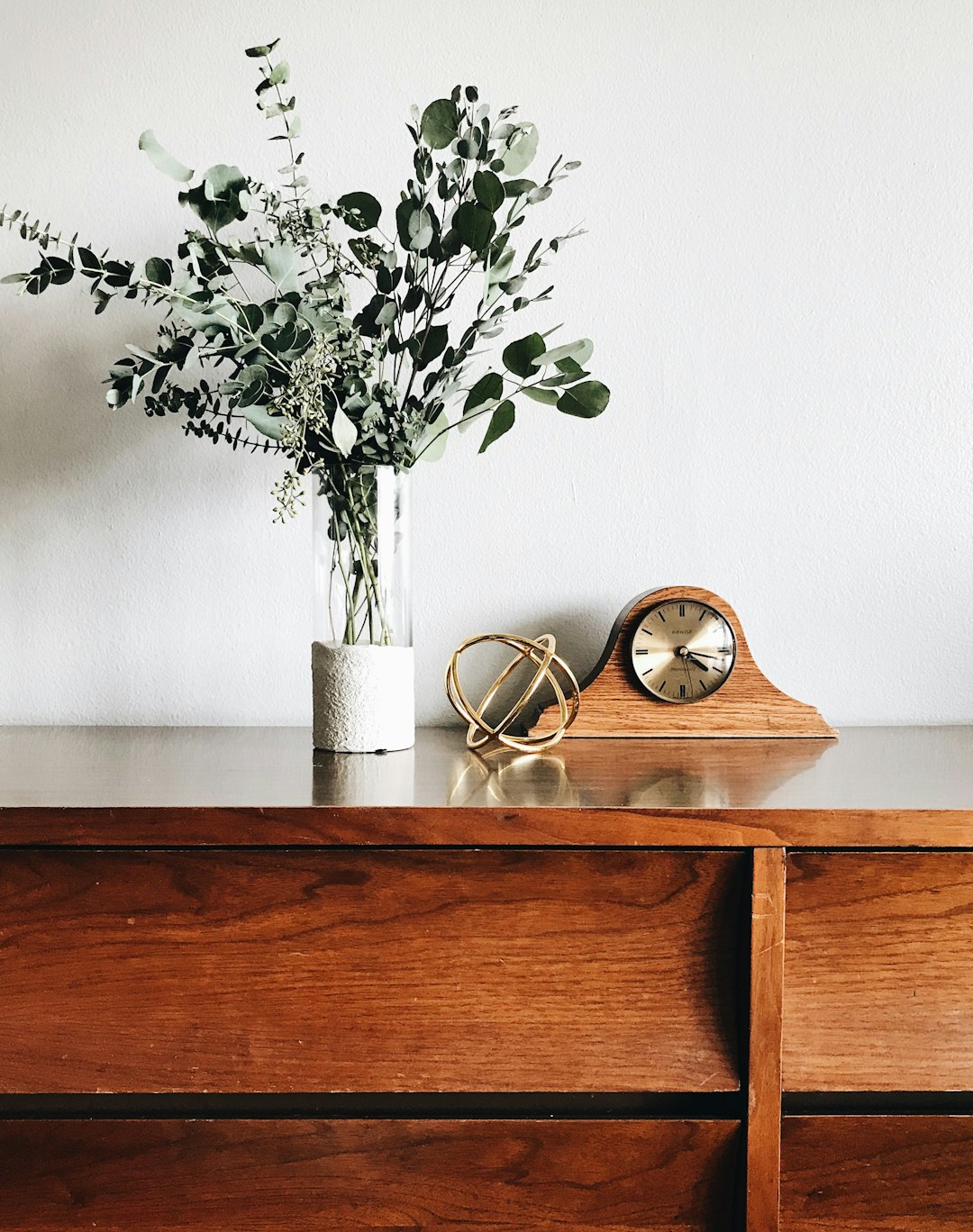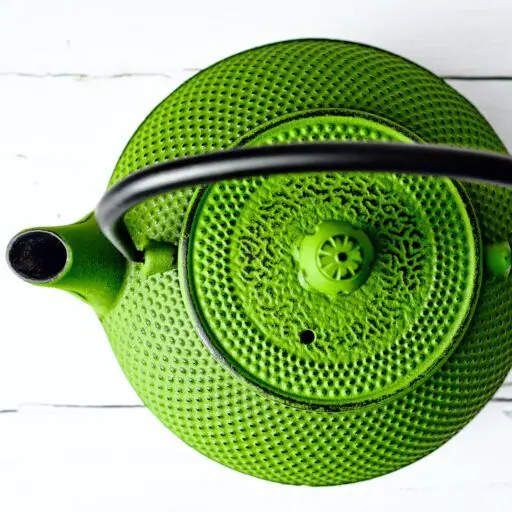Support our educational content for free when you purchase through links on our site. Learn more
Why is it called a tea room? [2024] 🍵
Have you ever wondered why it’s called a tea room? 🤔 You’re not alone! The term “tea room” has a fascinating history and cultural significance that goes beyond simply serving tea. In this article, we’ll delve into the origins of tea rooms, explore their evolution, and uncover the reasons behind their unique name. So grab a cup of your favorite tea and join us on this delightful journey! ☕
Table of Contents
- Quick Answer
- Quick Tips and Facts
- Background: The Origins of Tea Rooms
- The Evolution of Tea Rooms
- Tea Rooms Around the World
- Tea Rooms vs. Tea Shops: What’s the Difference?
- Why is it Called a Tea House?
- The Cultural Significance of Tea Rooms
- Tea Room Slang: A Peek into the Jargon
- FAQ
- Conclusion
- Recommended Links
- Reference Links
Quick Answer
A tea room is an establishment that primarily serves tea and other light refreshments. It can be a cozy corner in a hotel, a separate structure designed for Japanese tea ceremonies, or a gathering place where people meet to socialize. Tea rooms have a long history, dating back to ancient China, and have evolved to become beloved cultural institutions around the world.
👉 CHECK PRICE on: Tea Rooms | Tea Shops
Quick Tips and Facts
- Tea rooms are establishments that primarily serve tea and light refreshments.
- They can be found in various forms, from cozy corners in hotels to separate structures designed for tea ceremonies.
- Tea rooms have a rich history dating back centuries, with origins in ancient China.
- They have evolved to become cultural institutions in many countries, each with its own unique characteristics.
- Tea rooms are known for their cozy atmosphere, comfortable seating, and a wide variety of teas.
- Some tea rooms also offer food, such as scones, sandwiches, and pastries.
- Tea rooms have played a significant role in many cultures, serving as gathering places for socializing, relaxation, and intellectual discussions.
Background: The Origins of Tea Rooms

To understand why it’s called a tea room, we need to travel back in time to ancient China. Tea, which originated in China, was initially used as a medicinal herb by Buddhist monks to aid in meditation. Over time, tea became a popular beverage throughout Asia and the world. As tea gained popularity, so did the need for dedicated spaces where people could gather to enjoy this delightful drink.
The concept of tea rooms began to emerge during the Tang Dynasty in China (618-907 AD). These early tea rooms were simple structures or rooms where tea was served to guests. They provided a serene environment for tea ceremonies and social gatherings. The tradition of tea rooms spread to other parts of Asia, including Japan and Korea, where it became an integral part of their respective cultures.
The Evolution of Tea Rooms
As tea rooms spread beyond Asia, they underwent various transformations to adapt to different cultural contexts. In Europe, tea rooms became popular during the 17th and 18th centuries, particularly in the United Kingdom. They were known for serving traditional afternoon tea, high tea, and cream tea, accompanied by delectable pastries, scones, and sandwiches. These tea rooms became elegant establishments frequented by the upper class, providing a refined setting for socializing and indulging in tea.
In the United States and Canada, tea rooms took on a different character. They emerged during the late 19th and early 20th centuries as gathering places for women. These tea rooms provided a safe and respectable environment for women to socialize outside the home. They often served light lunches and afternoon tea, offering a respite from the hustle and bustle of daily life.
Tea Rooms Around the World
Tea rooms can be found in various countries, each with its own unique characteristics and cultural influences. Let’s take a virtual tour around the world to explore some notable tea room traditions:
🌍 East Asia:
Tea rooms in China, Japan, and Korea continue to serve traditional teas and snacks. These tea rooms often embrace the principles of Zen Buddhism, creating a tranquil atmosphere for tea ceremonies and contemplation.
🌍 Central and West Asia:
Tea rooms in countries like Kazakhstan, Kyrgyzstan, Uzbekistan, and Tajikistan offer a blend of local teas and delicacies. These tea rooms provide a glimpse into the rich cultural heritage of the region.
🌍 Southeast Asia:
Tea rooms in Myanmar and Singapore combine tea traditions with colonial influences. They offer a unique fusion of flavors and a charming ambiance.
🌍 South Asia:
Tea rooms in India and Pakistan are known for serving chai, a spiced tea that has become an integral part of the local culture. These tea rooms often serve delicious snacks alongside the aromatic beverage.
🌍 Europe:
Tea rooms in the UK, France, and other European countries continue to uphold the tradition of afternoon tea. They offer a wide selection of teas, accompanied by scrumptious pastries, finger sandwiches, and clotted cream.
🌍 Americas:
Tea rooms in the United States and Canada have evolved to cater to modern tastes. They offer a variety of teas, both traditional and innovative, along with a range of snacks and light meals. These tea rooms provide a cozy and welcoming atmosphere for tea enthusiasts.
Tea Rooms vs. Tea Shops: What’s the Difference?
You might be wondering, what distinguishes a tea room from a tea shop? While both establishments revolve around tea, there are some key differences between the two.
A tea room is primarily focused on providing a space for people to enjoy tea and light refreshments. It often offers a cozy atmosphere, comfortable seating, and a wide variety of teas to choose from. Tea rooms may also serve food, such as scones, sandwiches, and pastries, to complement the tea-drinking experience. The emphasis is on creating a relaxing and social environment where people can savor their tea.
On the other hand, a tea shop is more focused on selling tea and related products. It may offer a range of teas for purchase, along with tea accessories and other tea-related items. While some tea shops may have seating areas for customers to enjoy a cup of tea on-site, their primary function is to provide a retail space for tea enthusiasts to explore and purchase teas.
Why is it Called a Tea House?
You may have come across the term “tea house” while researching tea rooms. So, why is it called a tea house? The term “tea house” is often used interchangeably with “tea room” to refer to establishments that primarily serve tea. The term “tea house” has its roots in East Asia, particularly in countries like China and Japan.
In China, a tea house is known as “cháguǎn” (茶馆), which translates to “tea establishment.” These tea houses have a long history and are deeply ingrained in Chinese culture. They serve as gathering places for people to socialize, play games, and enjoy tea. In Japan, a tea house is called “chashitsu” (茶室), which means “tea room.” Japanese tea houses are often designed specifically for tea ceremonies, embodying the principles of simplicity, harmony, and tranquility.
The term “tea house” has become synonymous with tea-related establishments around the world, representing a place where tea takes center stage.
The Cultural Significance of Tea Rooms
Tea rooms hold a special place in many cultures, serving as more than just places to enjoy tea. They have played a significant role in socializing, relaxation, and intellectual discussions throughout history.
In some cultures, tea rooms are an integral part of the social fabric, providing a space for people to gather, connect, and build relationships. They offer a respite from the fast-paced world, allowing individuals to slow down, savor their tea, and engage in meaningful conversations.
Tea rooms have also been associated with intellectual pursuits. In the past, they served as meeting places for artists, writers, and philosophers, who would gather to exchange ideas and engage in stimulating discussions. These tea rooms became hubs of creativity and inspiration, fostering a sense of community among like-minded individuals.
Tea Room Slang: A Peek into the Jargon
Tea rooms, like any specialized community, have their own unique slang and jargon. Here are a few terms you might come across when immersing yourself in the world of tea rooms:
- Tea sommelier: A tea expert who has extensive knowledge of different teas, brewing techniques, and flavor profiles.
- Tea flight: A tasting experience that allows you to sample a selection of teas, similar to a wine flight.
- Tea pet: A small figurine, often made of clay, that is placed in a tea room as a companion during tea sessions. It is believed to bring good luck and enhance the tea-drinking experience.
- Gongfu tea: A traditional Chinese tea ceremony that involves precise brewing techniques and multiple infusions to extract the full flavor of the tea.
- Tea drunk: The feeling of euphoria or relaxation that can occur after drinking a particularly good cup of tea.
These terms and expressions add to the rich tapestry of tea room culture, creating a sense of camaraderie among tea enthusiasts.
FAQ

What does “tea room” mean?
A tea room is an establishment that primarily serves tea and other light refreshments. It can be a cozy corner in a hotel, a separate structure designed for Japanese tea ceremonies, or a gathering place where people meet to socialize.
What is tearoom slang for?
Tearoom slang refers to a secret language used by gay men in the mid-20th century to discreetly communicate and identify each other in public spaces, such as tea rooms. It was a way for gay men to connect and find companionship in a time when homosexuality was heavily stigmatized.
What is the difference between a tea room and a tea shop?
A tea room is primarily focused on providing a space for people to enjoy tea and light refreshments. It offers a cozy atmosphere, comfortable seating, and a wide variety of teas. A tea shop, on the other hand, is more focused on selling tea and related products. It may offer a range of teas for purchase, along with tea accessories and other tea-related items.
Why is it called tea House?
The term “tea house” is often used interchangeably with “tea room” to refer to establishments that primarily serve tea. The term “tea house” has its roots in East Asia, particularly in countries like China and Japan. In China, a tea house is known as “cháguǎn” (茶馆), which translates to “tea establishment.” In Japan, a tea house is called “chashitsu” (茶室), which means “tea room.”
Read more about “… American Tea Room: A Guide to the Finest Tea Experience”
Conclusion

Tea rooms have a rich history and cultural significance that goes beyond simply serving tea. They have evolved into beloved establishments around the world, each with its own unique characteristics and traditions. Whether you’re seeking a cozy corner to relax and enjoy a cup of tea or a place to connect with others over a shared love for tea, tea rooms offer a delightful experience. So, the next time you step into a tea room, take a moment to appreciate the centuries-old tradition and the warm embrace of tea culture.
Now that you’ve learned all about tea rooms, why not explore more fascinating articles on Tea Brands™? Check out our Tea Brand Spotlights and Tea Culture and History categories for a deeper dive into the world of tea.
Recommended Links
- 👉 CHECK PRICE on: Tea Rooms | Tea Shops
- 2023 American Tea Room: A Guide to the Finest Tea Experience
- Tea Brand Spotlights
- Tea Brand Guides
- Health Benefits of Tea
- Herbal Tea
- Tea Culture and History


